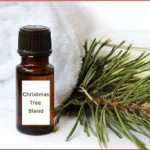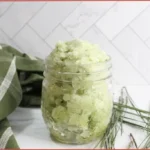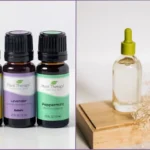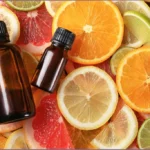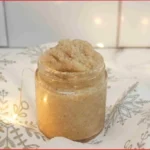Imagine a world where the scents you inhale have the power to transform your mood, reduce stress, and promote relaxation. Aromatherapy, the practice of using essential oils for therapeutic benefits, offers just that. It is a gentle, natural practice that uses essential oils to support overall well-being.
Whether you’re looking to unwind after a stressful day, lift your mood, or enjoy a more pleasant atmosphere at home, incorporating essential oils into your daily life can be a simple and enjoyable ritual.
Understanding how to use essential oils for aromatherapy the right away is key to creating a personalized wellness experience tailored to your specific needs.
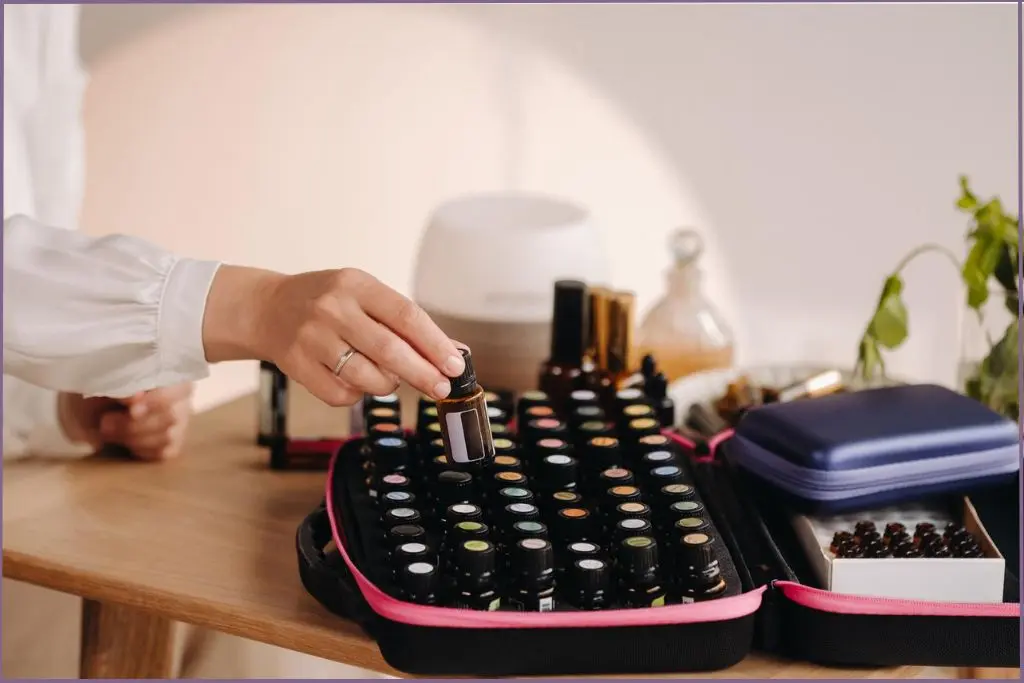
✨ Get 12 Free Holiday Diffuser Blends — Printable PDF
Instantly make your home smell like Christmas with these festive, ready-to-use recipes.
Every essential oil has its own distinctive aroma and uses in self-care and wellness. To enjoy the benefits of aromatherapy without the adverse effects, it’s important to understand which essential oil to use for the results you wish to achieve.
If you’re just getting started with aromatherapy, this guide will walk you through practical ways to use essential oils for aromatherapy through diffusers, massage, or even your bath. You’ll also learn how scent plays a role in influencing emotions and how to choose oils that align with your personal needs and preferences.
Table of Contents
Affiliate Disclosure: Some links on this site are affiliate links. I may earn a small commission if you purchase through them, at no extra cost to you. See the full affiliate disclosure.
What Is Aromatherapy? Science Behind The Scent

Aromatherapy is the practice of using the natural aromatic compounds found in essential oils to create a soothing or stimulating environment.
While it’s often associated with relaxation, aromatherapy can also help energize, refresh, or simply enhance the sensory experience of a space.
The idea behind aromatherapy is rooted in how our sense of smell interacts with the brain.
When you inhale the scent of an essential oil, scent molecules travel through the nose to the olfactory system, which is closely linked to the limbic system – the part of the brain that processes emotion and memory. This connection helps explain why certain scents can instantly make you feel calm, focused, nostalgic, or even uplifted.
Some small studies suggest aromatherapy may support relaxation and improve perceived well-being, but more research is needed to confirm specific physiological effects. In recent years, scientific research has supported the benefits of aromatherapy.
Although aromatherapy is not a cure or medical treatment, many people find that it adds a comforting, sensory-rich layer to their daily self-care routines.
Further Reading: Research on Aromatherapy
If you’re interested in learning more about the scientific research behind aromatherapy and essential oils, the following peer-reviewed articles provide useful insights:
Essential Oils & Health: A Review – This comprehensive review examines various clinical studies involving essential oils, discussing their uses, safety considerations, and reported outcomes.
Essential Oils Used in Aromatherapy: A Systematic Review – This article summarizes published research on essential oils used in aromatherapy, offering a broad look at trends and observations across multiple studies.
These resources are useful if you’d like to explore how aromatherapy has been studied in academic and clinical contexts. Keep in mind that research in this field is ongoing, and results may vary depending on the method of use and individual responses.
Why Diffusing Is A Popular Way To Use Essential Oils For Aromatherapy

One of the easiest and most effective ways to use essential oils for aromatherapy is by using a diffuser.
Diffusing disperses essential oils into the air as a fine mist, allowing their natural aroma to gently fill the room. Whether you’re looking to relax or energize, the fine mist ensures the oil’s properties are consistently present in the air.
This method is especially popular because it’s convenient, safe (no need for open flames or direct skin application), and allows you to experience the scent over a longer period.
It’s also easy to customize your experience by blending two or more oils to create personalized synergy blends for specific needs. Just a few drops of your favorite essential oil blend can help create a calm, energizing, or refreshing atmosphere to suit your mood or the time of day.
Aromatherapy diffusers are non-intrusive, convenient and can be used in various settings, from homes and offices to bedrooms and relaxation spaces. They provide an easy way to create a calming or energizing atmosphere wherever you are.
Want to relax and unwind after a long day? Place your favorite diffuser with relaxing essential oils on flat steady surface next to you.
Carrying a portable essential oil diffuser allows you to get the benefits of aromatherapy anywhere you go.
Types of Diffusers
These are the main types of aromatherapy diffusers to choose from:
- Ultrasonic diffusers use water to disperse a fine vaporized mist, adding moisture and aroma to the space.
- Nebulizing diffusers release a concentrated mist of essential oils without water for a stronger aroma.
- Passive diffusers use disperse essential oils from an absorbent pad or filter, offering a simple and quiet option.
- Reed diffusers release scent gently through natural reeds, creating a soothing atmosphere in a smaller space.
How To Use Essential Oils Without A Diffuser
While diffusing is a go-to method for many, it’s just one of several ways to enjoy the aromatic benefits of essential oils.
Here are some practical, easy ways to use essential oils without a diffuser.
Topical Application (Always Diluted)

Topical use involves applying diluted essential oils directly to the skin. This method is often used for massage, skin care, or when you want a more targeted aromatic experience.
It’s easy too! Dilute essential oil with a carrier oil such as jojoba or sweet almond. Make sure to use the correct dilution ratio.
Apply gently to pulse points such as the temples, wrists, or behind the ears for an aromatic experience.
Massage diluted oils into tight or tired muscles to promote relaxation.
Essential oils must be diluted with a carrier oil before topical application. Pure oils are highly concentrated and can cause skin irritation when applied without diluting.
Indulge In An Aromatherapy Bath

Adding essential oils to a warm bath can enhance the experience with soothing aromas.
Mix a few drops of essential oil with a carrier oil or bath dispersant before adding to water. This helps distribute the oil evenly and reduces the risk of skin sensitivity.
For a spa-like experience, try lavender for relaxation or citrus oils for an uplifting effect.
These tips on how to use essential oils in the bath will transform your everyday ritual into a relaxing spa session.
Take your aromatherapy bath up a notch with homemade bath care products such as bath salts, bath teas, and melt-and-pour soaps scented with essential oils.
Use Essential Oils In The Shower

Using essential oils in the shower is a great alternative when you want to get the benefits of aromatherapy but don’t have time for a long leisurely bath.
There are a few different ways to use essential oils in the shower for a wonderfully aromatic experience.
For a quick revitalizing steam, add these homemade lavender and eucalyptus shower steamers to your shower routine.
Use Body Care Products Scented With Essential Oils

Using body care products with essential oils can transform your everyday self-care routine into a luxurious and therapeutic experience.
Body products infused with essential oils offer a simple, consistent way to experience aromatherapy.
Make your own luxurious scented body butters, lip balms, and face masks scented with these easy DIY recipes using essential oils. Choose oils that match your mood – lavender for calm, peppermint for refreshment, citrus for energy.
From calming lavender-infused baths and rose bath bombs to revitalizing citrus body lotions and luscious lip balms, the possibilities are endless. Get recipes to make your own all-natural bath and body care products with your favorite scents.
Spritz Room Sprays and Linen Mists
Essential oil room sprays or linen mists are a quick way to freshen your space and enjoy their natural scents:
Spritz homemade room sprays on pillows, curtains, or into the air for a quick burst of fragrance. Customize the room spray recipes with your favorite aromatherapy blends for a personalized experience.
Scent Home Décor Accessories
Scenting home décor accessories is a fun way to use essential oils for aromatherapy.
Make scented beeswax candles or put together decorative centerpieces using scented pinecones.
Assemble seasonal scented potpourris for Christmas and fall to fill your home with scents of the season.
Make natural cleaning products with essential oils
Refresh the aroma as needed by adding a few drops to your décor elements.
How To Use Essential Oils For Aromatherapy Anywhere

It’s not always possible to use a diffuser when you’re out and about.
There may be times when you’re out and there’s just no way to plug in your diffuser or use a passive diffuser in a public space. For example, using a diffuser at an airport lounge or hospital waiting room is inconvenient.
At times like these, here are some alternate ways to use essential oils for aromatherapy:
Carry a personal inhaler: Aromatherapy inhalers are small, portable devices designed to contain essential oils. Slip one in your pocket or purse, open and inhale as needed.
Wear aromatherapy jewelry: Available in various styles and designs, aromatherapy necklaces and bracelets are designed to release essential oils slowly over time, so you can enjoy the benefits of aromatherapy anywhere.
Slip a roll-on in your bag: Pre-diluted blends in handy bottles fitted with a roll-in top make it easy to apply essential oil to pulse points anytime. Roll-on bottles with prediluted blends are convenient to carry anywhere and use anytime.
Whether you prefer bath blends, massage oils, or personal inhalers, the best method is the one that fits naturally into your routine.
Use Essential Oil Synergy Blends
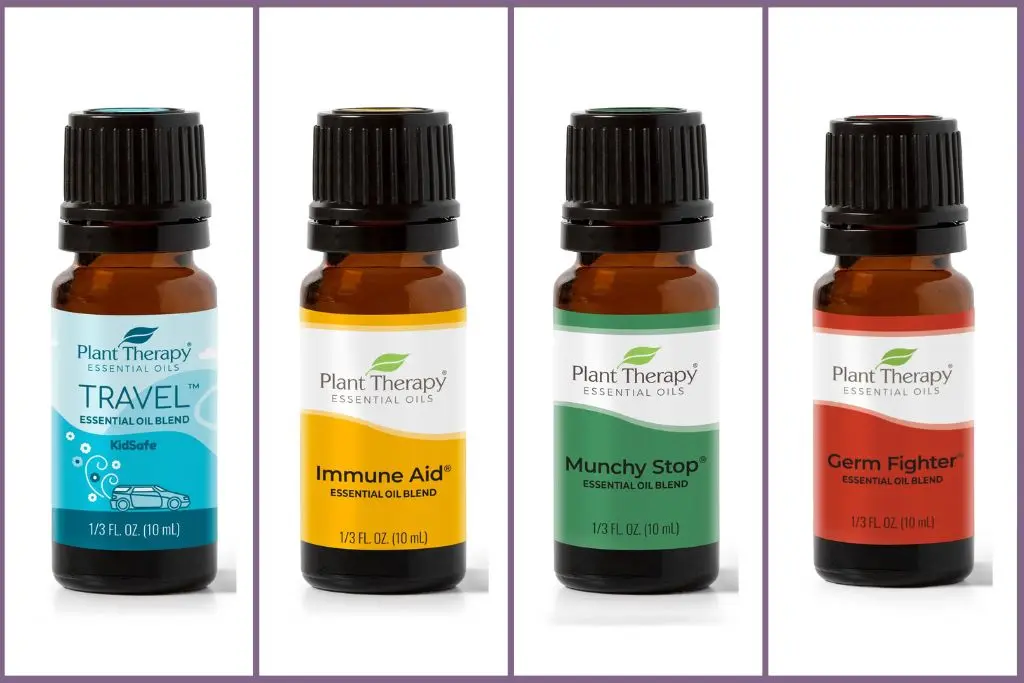
Essential oil synergy blends combine two or more complementary essential oils, providing faster and more powerful results.
Create a calming evening atmosphere by blending lavender, chamomile, and cedarwood. These soothing scents are often used to unwind before bedtime.
For a more invigorating environment, use a synergy blend with peppermint, rosemary, and lemon. The bright, crisp aromas can help sharpen your focus during work or study sessions.
Blending frankincense, geranium, and bergamot can help create a balanced, uplifting mood on days when you’re feeling overwhelmed.
Seasonal Aromatherapy Ideas
Enhance your home’s ambiance with seasonal scents:
- Festive Christmas essential oils and blends: Fill your home with festive aromas
- Fabulous Fall essential oils & blends: Fill your home with warm, cozy aromas
- Refreshing Spring diffuser blends: Blends combining floral and citrus aromas are reminiscent of this season
- Sizzling Summer diffuser blends: Most citrus essential oils to keep you feeling cool and refreshed
Use Aromatherapy As Part Of A Holistic Wellness Routine

Use these ideas to make aromatherapy a part of a regular holistic wellness routine.
Pair Aromatherapy with Meditation and Yoga
Aromatherapy can significantly enhance your meditation and yoga practices.
Calming and grounding essential oils such as frankincense, cedarwood, and lavender can help create a calm, centered atmosphere for yoga or meditation.
Use a diffuser or apply a pre-diluted blend to your pulse points to enhance your practice.
Create Daily Rituals for Self-Care
Incorporating aromatherapy into your daily self-care routine can transform ordinary moments into soothing rituals.
Start your morning by diffusing an energizing blend of citrus oils like lemon and orange while you prepare for the day. This can boost your mood and set a positive tone.
In the evening, create a relaxing atmosphere with lavender or chamomile oils as you unwind.
Add a few drops to your bath, use them in a soothing massage, or apply them to your skincare routine.
Establishing these rituals enhances your well-being and also fosters mindfulness, encouraging you to take time for yourself each day.
How To Use Aromatherapy in Specific Spaces
To maintain consistent well-being, use aromatherapy strategically in various environments.
At home, create a calming atmosphere in your living spaces by diffusing relaxing oils in the evening, promoting a peaceful ambiance for family time or relaxation.
In your office, use uplifting blends such as peppermint or rosemary to enhance focus and productivity during work hours.
When traveling, carry a portable diffuser inhaler or roll-on to reduce stress, ease anxiety, and provide a familiar sense of comfort, no matter where you are.
Safety Guidelines When Using Essential Oils For Aromatherapy
When using essential oils for aromatherapy, it’s essential to follow safety guidelines and expert advice to ensure a positive and beneficial experience:
– Use only pure, high-quality essential oils from reputable sources such as Plant Therapy or Barefut Oils.
– More is not necessarily better when using essential oils for aromatherapy. A little goes a long way with these highly concentrated and potent plant extracts. Get more tips on how to use essential oils safely.
– Take time to go through this safety guide to avoid adverse reactions.
– Learn good storage practices to protect the properties of the oils and extend shelf life.
– Keep oils out of reach of children and pets. These highly concentrated extracts can be toxic if ingested in large quantities.
– Consult with a healthcare professional especially if you have a medical condition, are pregnant, or are breastfeeding.
– Do a patch test on your skin before topical applications to check for any allergic reaction or sensitivity.
When using essential oils for aromatherapy, you may need to experiment with different methods and oils to identify options that suit your needs and preferences.
